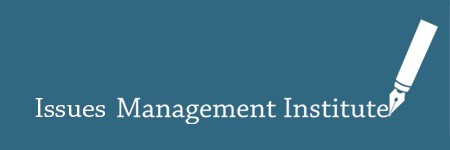Framing: how to shift frames
Service: management report (The report contains research and diagnosis of existing frames, and analysis of the political, legal and social license, a program for stakeholder management).
Read more on frames
Every company needs a frame diagnosis. Frames as such are of course invisible. They can be recognized however, by the wording that people use. Frames contain the problem to be solved, the solution to this problem and the possible damages when not adequately solved. Sometimes the latter also comprises the one to blame, ‘the savage’. This should better not be your company.
Case: the (plastic) packaging industry
Retail Plastic Packagings are high tech pieces of work. Their barrier properties take care of the reduction of fracture and decay of the product, of efficient distribution, stackability, information and many other functions. Most end users on the other hand, unaware of all this, hardly give packaging any other thought other than brand recognition. They pass through peoples hands from the supermarket to the kitchen. After use the packaging contributes to the content of the kitchen bin. This is what people experience and see. This is not necessarily the same as knowing the rationale and reality behind the packaging. In this knowledge gap the green movement framed packaging as garbage, the victim being the environment and the savage the packaging industry. From this garbage frame derived the thought ‘why use packaging at all’. Packaging however, is in essence a medium of transportation and distribution. Otherwise everyone would have to house his own cow on the balcony. I don’t think the mayor of New York would even allow this. The transportation frame didn’t make it to a social license. How about the health and product safety that packaging guarantees? That frame didn’t make it either.
Opinion comes first, facts are looked for thereafter. Fact is, for example, that when one puts plastic into the ground, one can retrieve it at any possible moment. The plastic item appears to be in exactly the same shape as before. Any toddler has made this observation at the age of three, when he or she recaptured to his or her happy surprise the lost baby sand spade of last year in a virginal state. Central fact here is that worms to not devour poly-ethylene. The meaning of this is small. The fact that the plastic is still there, a year later, is basically a question of facts and more facts than of meaning. Until someone adds that meaning and says: “plastic is environmentally unfriendly.” And especially of course “plastic that is put into the soil, such as plastic in household garbage”. What plastic is in effect part of household garbage? Plastic packaging. So plastic packaging is environmental unfriendly. Now, all of a sudden, the fact has become meaningful. When we promote something to a fact, then we still note here, that our idea came first, the perspective as it were. The fact that substantiated that came later.
Was the frame orientation at first ‘household garbage’, it could also have been ‘energy’. The raw material of plastic is gas or oil. We only use a fraction of the world supply for plastic. In the garbage pile packaging functions as fuel, which in turn means we don’t have to add extra oil of gas to the ovens, as well as generating the possibility that the generated heat can be used, i.e. recycled, for household heating. A plastic packaging in the frame orientation ‘energy’ is borrowed piece of oil: all other oil is used for gasoline or kerosine directly. In the energy orientation plastic contributes to sustainability. It protects a product against damage and rot and remains oil that we normally use directly. The other orientation thus takes care of a complete other opinion and hence a social license.
* This text is also found on this site ass Conjecture 20.
Our service: We explored yet another frame orientation for the plastic packaging industry, much less alien to the garbage frame as the other possible frames, also focussed at the end of the life cycle. We called it ‘the energy chain’. The raw material of plastic is oil isn’t it? Mankind uses it mainly for direct use in fuel. Only a fraction is used for the production of plastic. In the incinerator in which we dispose of our waste materials plastic remains oil, thus taking care of the energy needed for the combustion. Therefore we don’t need extra fuel. Oil is fuel, plastic packaging is a temporary useful product, used before eventually being used as fuel. The product of the combustion furnace is then used for thermal recycling. In the energy orientation plastic packaging contributes to sustainability, not only for the fuel, but also because it protects food and makes sure the food is in a healthy state and eaten rather than being thrown away. The other orientation takes care of another opinion. It needs other wording and another language in which we construct our reality. After the frame research, we developed this wording and a program with congruent facts and language. We generated meetings and publicity in which boards, sales managers and employees could communicate with all the stakeholders of the packaging industry without the burden of the negative frame and a positive new social license.
Complication we would love to be asked to solve: littering. Littering is becoming a huge environmental problem, on land as well as in the seas, the so called ‘plastic soup’. Frame shift is sure to deliver a solution to this problem.
Clients we supplied this service to:
Housing Governments & Non Profit Healthcare Law Enforcement
Collapse
